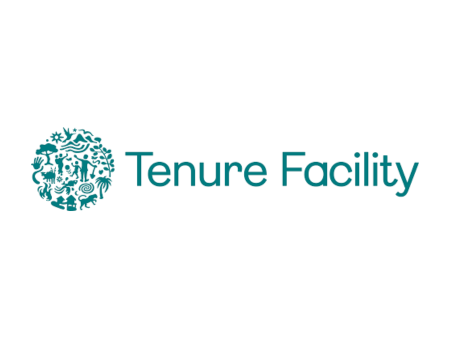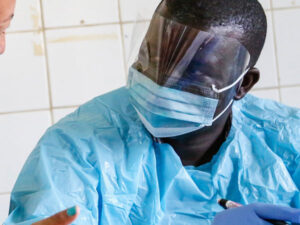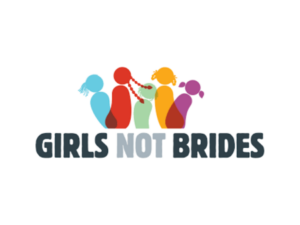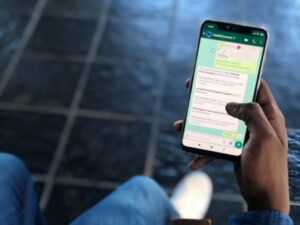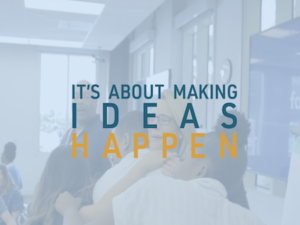Tenure Facility is the first financial mechanism to exclusively fund projects working towards this goal while driving development, reducing conflict, improving global human rights, and mitigating the impacts of climate change.
Nonette Royo spoke with Ambika Samarthya-Howard on June 30, 2025. Click here to read the full conversation with insights highlighted.
Ambika Samarthya-Howard: Tell us about your work with Tenure Facility. Do you work specifically in Indonesia or is this globally?
Nonette Royo: It’s globally. Now we’re in 20 countries. We have 36 partnerships—commitments to Indigenous Peoples’ organizations that we have mutual agreement with: we chose each other. It’s a commitment for five years, that we support them approximately $1 million a year for five years. We start small if they couldn’t handle the $1 million.
Ambika Samarthya-Howard: Are you a sub-grantor?
Nonette Royo: Yes, you can call it that. We’re an intermediary, really. It’s very specialized. It’s for land rights. Because that’s always underfunded. It’s always sort of subbed to other programs like conservation, community-based forest management, or integrated conservation and development. There are always other names. There was never really just a land rights funder.
Indigenous Peoples tell us, “We get $50,000, $100,000 grants, not much more, yet we protect large territories. We face narcos, we stop illegal miners, we monitor and put out forest fires, we defend the integrity of the forest. Yet for all this work, we get no support, and even get criminalized.”
Tenure Facility sub-grants invest in land rights. We also support strategic convenings, allowing dedicated time for ritual and reflection and recalling our ancestors. We secure ground-truthed data of territory and get sign-off from neighboring communities, elders, women, and also from the heads of the village, district, and province. This official sign off becomes key to the formalization of land tenure claims and the registration of maps with government.
That is what our funds have been focusing a lot on. We are really a land-rights organization. But what happened in the process is that, because we’re transferring funds directly to Indigenous Peoples’ organizations, we became an example of direct grant-making for larger funds to IPLC [Indigenous Peoples and Local Communities].
It wasn’t really our primary purpose. Our purpose was to make sure that tenure is recognized in a serious way. But our approach became a good-practice example for channeling funds to IPLC. But we have very clear records of how much goes to us and how much goes to the Indigenous Peoples’ organizations. We’re actually tracking to make sure we are tied to a 75/25. We have to release all the 75% to direct grants, and keep 10% for salaries and overhead. Then the other 15% is to prepare the groups to become the direct recipients and what it takes for that to happen, so the preparatory bits.
Ambika Samarthya-Howard: I think it’s phenomenal what you’re doing, and I think it’s great because I’m sure you’ve established both a process that feels right to them and resonates with their cultural values, but also you’ve been building trust. What I’m really curious about is how have you been able to build trust with so many different communities? How did you build that trust?
Nonette Royo: It’s a partnership that includes trust-based information sharing from everyone—IPLC themselves, and those who have worked with them for years, from all sectors in the country. Over the years, we have developed a circle of IPLC organizations, their trusted allies, and a compendium of information from activists, donors, and Indigenous Peoples themselves.
Our board, 50% to 70% of whose members are IPLC, also helps us refine partnerships. There’s a context analysis that we do with local expertise, which takes essentially a trusted person operating in that country that has multiple contacts with everyone, doing intensive consultations and understanding of what’s going on with land rights, what the law and jurisprudence offer, and how it can be implemented. Usually we have at least 5 to 10 candidate IPLC organizations or their allies to choose from. Sometimes we already have a reading of key tenure issues; all it takes is active discussion. Then the board sits on that, looks at it, and triangulates.
We note the important role of government in tenure recognition. We ask IPLC organizations on the list whether they can work with a government unit they can trust. There has to be a government unit to recognize the rights.
All of this relies a lot on not just our information and the funding we support but the network that supports the groups already. It builds on a long process of other NGOs having supported the emerging strong ones, other donors, other information from networks and alliances.
Then when we get that momentum, then we get the idea note, the concept note, the proposal. At the idea note level, we already commit to them with the understanding that they may not pass, but most of them pass. This is the other thing that saves us. They pick a trusted NGO where they have a very good MoU and a project management unit, and that NGO receives the money, but they make the decision. It’s like that generally.
Ambika Samarthya-Howard: How do you go from an inception to collaboration in not just a grant and not just the choosing but into the actual legislation and the tenure? Can you just give me an example of that either from Indonesia or from Africa?
Nonette Royo: Yes. For Indonesia, the actual legislation of tenure is embedded in the forestry, environment, and autonomy laws, among others. Partners in Indonesia, notably AMAN and BRWA, work to apply sub-national laws to recognize indigenous territories. But they are also influencing national geo-spatial registries and customary forest laws. Key to this is their ability to show culturally and socially verified, geo-spatially formatted data, using government-issued base maps. For Africa, in the DRC, there are several legislative processes that parallel government-led land use systems, for example, community forestry concessions for conservation and management. The community’s ability to map and submit requirements to government offices is key to securing territories of 20,000 to 50,000 hectares.
Ambika Samarthya-Howard: When they pick a law in provincial regulation, you still have to claim your rights against that regulation?
Nonette Royo: Yes. It’s the implementation.
Ambika Samarthya-Howard: Can you give me an example of what that implementation looks like?
Nonette Royo: Implementation has two meanings: Partners implement their projects, and as they do that, they apply and implement existing laws or policies. Or they develop regulations recognizing their land tenure. In Indonesia, implementation also means that they aggregate all the maps produced so far and submit them to government for verification and finalization of tenure. The easiest part is capturing GIS [geographic information systems] points. The hardest part is agreeing on boundaries, because there are other communities sharing a common boundary. Usually, if this is not done well and this is just done on a GIS, it creates conflict. This is where we say the social process is more expensive and lengthy than the actual clicking of the GPS. The technical process is very swift. The social process is the most difficult. Tenure Facility partners invest in that social process a lot. When they have that, the final process with either a provincial government or a national government is smoother.
The formalization of tenure, in terms of an issuance of a title or a collective title or a tenure instrument, may take long or short, depending on the political opportunity. A collective land tenure instrument may not necessarily become a collective land rights title. It can be an agreement for a social forestry scheme. In Indonesia, the one they choose is Hutan Adat, which is the customary forest agreement.
Ambika Samarthya-Howard: Can you tell me more about that? I’ve never heard about that before.
Nonette Royo: Indonesia has five tenure options for recognition under national forestry laws, and the only one that AMAN chooses is the customary forest. There are also sub-national laws and regulations that they choose to use.
These are basically 25-year agreements for managing a cluster of community customary forests, There’s a co-management agreement, which is an agreement to manage a national park or a protected area where the Indigenous Peoples manage, and are agreed by government to manage that area, and they sign an agreement.
There is a plantation agreement where it’s a degraded area or it’s just been cut. It’s in an area that is a concession area. Then the government agrees for the community to reforest that area and gives them tenure instrument for that. That’s, again, another 25 years. For Indonesia, there are many communities that agree to this. The fifth one, I can’t remember which one it is. I think it’s a partnership agreement with government on something that is related to, I think, recovering or capacity-building.
Only one, the customary forest agreement, is acceptable to the alliance of Indigenous Peoples. At the sub-national level there are agreements that they’re choosing. That’s the one where a province or a district parliament, or the province or the district head, signs on to a map developed by the community and states that this is community-owned and managed and that they have shown documentation to support it.
Ambika Samarthya-Howard: If you’re saying that the law is already there, how is this the implementation of the law?
Nonette Royo: Unimplemented laws on land rights are powerless to realize rights. Rightsholders need a title or tenure instrument to realize rights. The projects are designed to implement the mapping. Let’s say in the customary forest Hutan Adat, for example, the law requires customary community to take a lot of steps that they could not do swiftly without funding, or will just not be able to do. The government is supposed to provide funding for it because it’s in their regulation, but government always says, “Oh, we have no budget for this. This is not a priority budget,” so the community doesn’t get the money that they need for this.
The map is also key to the exercise of Free and Prior Informed Consent [FPIC]. Community maps and ground-truthed data cannot be manufactured. When a company comes in with a project, they need FPIC, but we can ask, “Where’s the map? Who are the people that are registered to own that map? Is that map signed by the local government?” All of those things. If those are not met, there is no FPIC, basically.
Ambika Samarthya-Howard: Yes, that makes sense. I’d like to hear about the work you’re doing in Ecuador as well.
Nonette Royo: In Ecuador, it’s very interesting. We’re still learning. The short version is, we learned that we cannot forge project partnerships with larger Indigenous Peoples alliances if it does not come naturally. This is because land rights work is a complex process. We also tackled Indigenous Peoples land rights in protected areas, which had always been the one reason that the government takes the rights away from Indigenous Peoples. We found there was a good opportunity to bring two strong Indigenous Peoples alliances together. But we learned we can only wait for the right opportunity to come from the policy side, and only work with one Indigenous Peoples alliance at a time.
Ambika Samarthya-Howard: I’m curious how in yourself or in your organization navigate that sense of time with the urgency of the climate action work, with the urgency of knowing that Indigenous People having more ownership will directly correlate to better climate indicators.
Nonette Royo: Yes. I’ve been doing this for now maybe 40 years. I started a long, long time ago in the Philippines, and then Indonesia. A large part of my work has been Indonesia. It’s always been– Okay, I guess what I’m saying is when the communities map, then they can describe what they’re doing with the forest. It’s always been their work in the forest. It’s just that we didn’t hear about that, and over time, over the years, they’ve developed these maps and understanding with smaller grants, with other NGOs supporting them.
It’s not the first time they got the support from Tenure Facility, so it’s been iterative work on their part. Because of that also they have developed, and their work alone or independently, or with NGOs led to the development of those policies and laws. It’s just that we come to a point when they need to really test that that law can deliver on their rights. They didn’t have the money to really push it. That’s when Tenure Facility came in, just when the money is needed.
My sense is that we’ve tested to sort of allow for some of these hectarages in communities to take off. If you take that money away now, coming from Tenure Facility, my thinking of this is there’s enough momentum for the ones that we’re helping to get their own funding from donors, for example. They can continue with less because they have enough momentum and model. They can continue with more also because for the same reasons.
I guess for me the most important thing is to focus on the positive: the fact that Indigenous Peoples are already doing the work of protecting forests. This is their climate action. The challenge is how they can maintain this work of forest protection, with more secure tenure, when more and more of the last forest stands are being targeted for conversion to other destructive land uses. What is urgent in our work is to keep this protection going. Secure tenure, support their governance of territory such that forests are protected and monitored for good climate action. IPLC partners we support have taken a stand with the forests. They have a target: stay in the territory, keep carbon in the soil. It’s really them understanding that there is a target, and they dedicate their lives to reaching that target. They can be very focused, with or without our funding for it. But they can do more because we are channeling the funding they need. They have developed this adaptive decision-making over the years. In the annexes of our last two annual reports, you can see the number of things that they do as an aside, not just mapping and doing their tenure work and negotiating those. They have done all of that.
My sense is that this model is useful for a government trying to learn how to do this better or right, or for some donors to learn how to do it, but for community to actually learn how to organize themselves and do it at this scale. Yes.
Ambika Samarthya-Howard: Every time I talk to people about Indigenous land rights, there’s never a follow-up question about why is that important. Do you feel like that’s how you describe your work?
Nonette Royo: I do that all the time, but I still get the question as to how do you measure in the end, how do you know that you’re contributing to mitigation or adaptation?
Ambika Samarthya-Howard: What do you say?
Nonette Royo: That’s one area where we can improve—communicating clearly that land rights is important to make an effective climate response—to manage land use and land use change issues. For us, it’s a challenge and an opportunity, because many communities already got their tenure. What we are now doing is implementing our strategy on sustaining the work when rights are secured. The sustaining part is where we basically help them develop not just a land use plan but to make sure that there is a way to get support, to understand their options for the economic choices that they are making or will make. For example, irresponsible carbon traders or “cowboys” come to partners in tenured areas, who can be easy prey without good information of options and territorial plans.
Sustaining work also includes supporting traditional knowledge and enabling resilience, and community adaptation in territories with secure tenure. I am hoping that communities can do their own datasets for biomass, maintaining that and understanding the value of that.
Ambika Samarthya-Howard: You have communities doing their own datasets for biomass?
Nonette Royo: Some are asking these questions, and we are helping them make their own informed choices for next steps. Our board does not encourage carbon trading, but this is a community choice. FPIC is important. Basically, leadership for the territories is key to thrive, survive, and maintain the vision of thriving forest communities.
Ambika Samarthya-Howard: I can just imagine, if you’ve been taking care of your own land for generations and generations and generations, and then someone is like, “Okay, let’s try to have you monitor your land stewardship.” Obviously, you’ve already built the trust, there’s no doubt about that, but how do you make them care about doing something like that?
Nonette Royo: Yes. Exactly. Communities that have inter-generational “life plans” do a lot of land use monitoring and study options for generating income, sometimes including ecosystem service payments. We don’t need to ask them anything; they are curious about carbon, biomass. They do it because they heard, are curious, and it’s part of understanding how to generate income, to benefit from the land without destroying it. Carbon conversations reach them. Carbon cowboys keep coming. Communities come back to us saying, “Well, here they are again. Can we do this carbon deal now?” We say, “It’s not our decision,” but we feel responsible to establish guard rails as a trusted ally.
Ambika Samarthya-Howard: I wanted to ask a little bit more about your partnerships outside of governments and within the communities. I know that you partner very closely with If Not Us Then Who? And AMAN. I’m curious how you approach the justice element and the storytelling element.
Nonette Royo: Their justice element is actually their own, for AMAN, for example. They have many other partners that they work with on this. Essentially, for us, it’s up to them to tell the world how they work with us. We are a funding partner; we look for accountability and good financial systems, as much as we care for land rights and justice. We help them build these financial systems if and when they want to build it better.
If Not Us Then Who helps partner in storytelling and effective communication. They are basically helping us support partners to do media techniques and storytelling, because we can’t do that ourselves. That’s always upon request of partners, because we cannot actually force partners to undergo training if they do not think they need it. They are not an Indigenous organization and they’re not based in the South, so it’s an exception that we give them the funding.
Ambika Samarthya-Howard: What made them the exception?
Nonette Royo: It’s the requests that they’re receiving from our partners. Yes, we justify it as a service provision. It’s one that the partners chose.
Ambika Samarthya-Howard: What’s the service? The storytelling aspect?
Nonette Royo: Yes, helping them write the stories. There could be others out there. They just didn’t come to us, but those are open. It’s not just If Not Us Then Who.
Ambika Samarthya-Howard: How are you feeling about New York Climate Week and COP, and what are your thoughts on all of that?
Nonette Royo: I feel it is very important, very political right now.. I was at London Climate Week. There are two things that were very obvious: there’s less funding for IPLC land rights, and because of that, Indigenous Peoples’ support networks and the Indigenous Peoples themselves are saying, “Okay, we are just going to work together, so we are not going to compete,” which is really nice. I felt very light, happy, hearing this.
And there’s a high potential for more funds through the system with TFFF. That’s not going to come immediately. If there is this momentum now, I think the next big event is in New York Climate Week, to bring the conversation about direct funding on Indigenous Peoples. We can’t say enough of that.
Ambika Samarthya-Howard: Thank you for your time.
Click here to read the full conversation with insights highlighted.
Ambika Samarthya-Howard (she/her) is the Solutions Journalism Network’s Chief Innovation Officer: She leads on innovation and technology, leverages communication platforms for the network strategy and creates cool content. She has an MFA from Columbia’s Film School and has been creating, teaching and writing at the intersection of storytelling and social good for two decades. She has produced content for Current TV, UNICEF, Havas, Praekelt.org, UNICEF, UNFPA, Save the Children, FCDO, Global Integrity and Prism.
* This interview has been edited and condensed.

